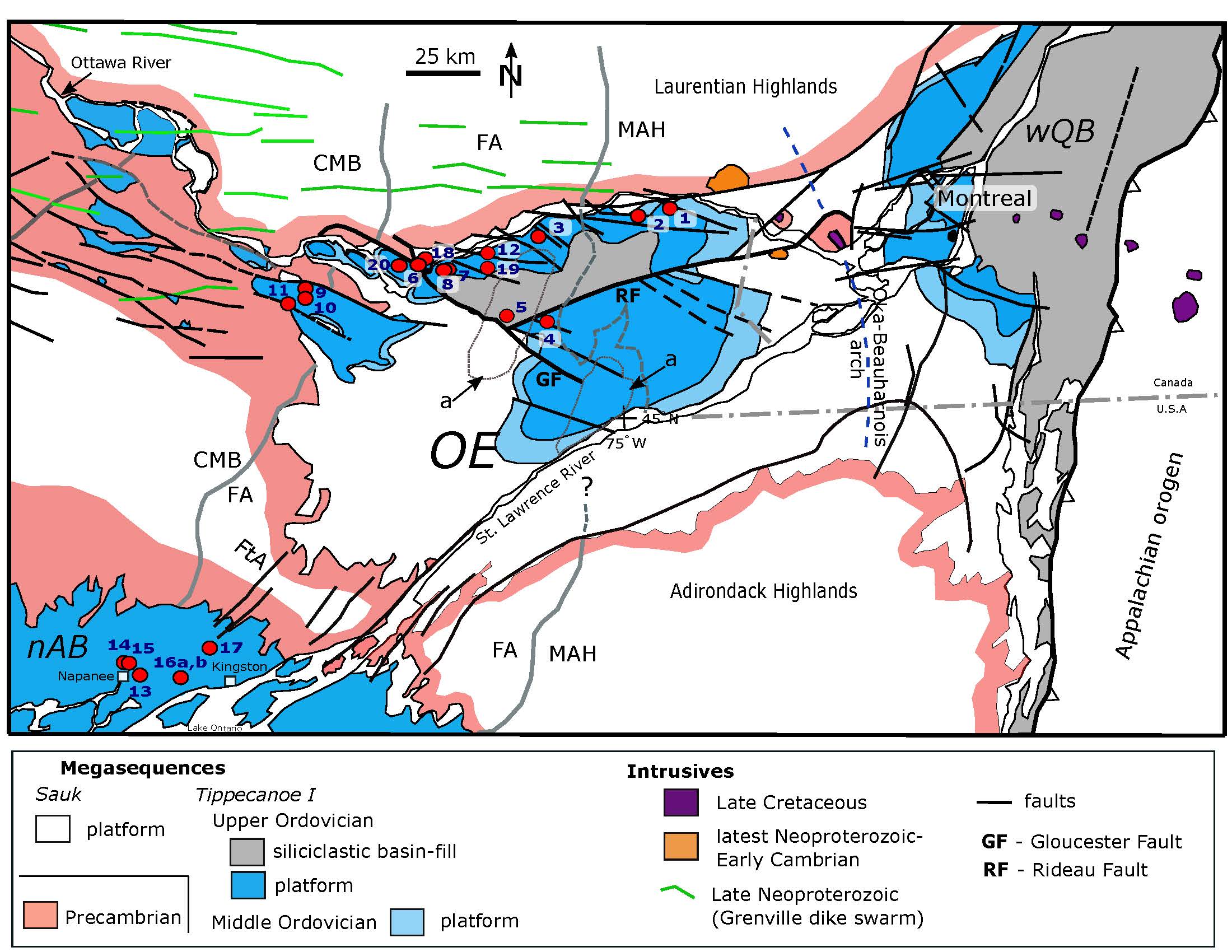Abstract:
Three stages of carbonate-platform development are preserved in the upper Turinian – lower Chatfieldian succession of the Ottawa Group in the Ottawa Embayment and represent deposition along the Late Ordovician Taconic foreland interior of paleo-southern Laurentia. Compared with contemporary stratigraphy in the adjacent northern Appalachian (southern Ontario, New York state) and western Quebec basins, the intermediate Stage 2 succession, which brackets the Turinian–Chatfieldian boundary, preserves embayment-specific stratigraphic patterns. These include: (i) dramatic west-to-east thickening of the upper Turinian Watertown Formation that defines differential subsidence along the present axis of the embayment, (ii) post- Watertown base-level fall defined by appearance of shoreface siliciclastics, (iii) early Chatfieldian marine transgression represented by the proposed L’Orignal Formation that is coeval with but lithologically distinct from the Selby Formation in the northern Appalachian Basin, and (iv) platform segmentation that resulted in a depositional mosaic of shallow banks (Rockland Formation) and equivalent deeper water micro-seaways (lower Hull Formation). The latter event immediately follows accumulation of the Millbrig bentonite, here dated at 453.36 ± 0.38 Ma. Bracketing these local stratigraphic patterns are the bounding stages (1 and 3) represented by the upper Turinian Lowville Formation and middle Chatfieldian Hull Formation, respectively, that contain facies attributes in common with the adjacent basins and characterize inter-regional depositional systems of first warm, then cooler oceanographic conditions. Stage 2 identifies a structurally controlled transition between these end-member stages: a far-field response in the foreland interior, localized along the axis of a late Precambrian fault system, to contemporary change in subsidence rates and tectonomagmatic events along the Laurentian margin.
